Community
Move Over Jet Fins: There’s a New Tech Fin in Town
British photographic phenom turned tekkie Jason Brown reviews Fourth Element’s new entry into the technical diving fin market—having long been dominated by Scubapro’s Jet Fin. Brown reports that the beloved ocean-positive, thermal protection company is kicking some serious tech fin butt. Be forewarned—you’re likely gonna wanna pair!
Text and images by Jason Brown. Header image: courtesy of GUE archives. Resistance is futile!
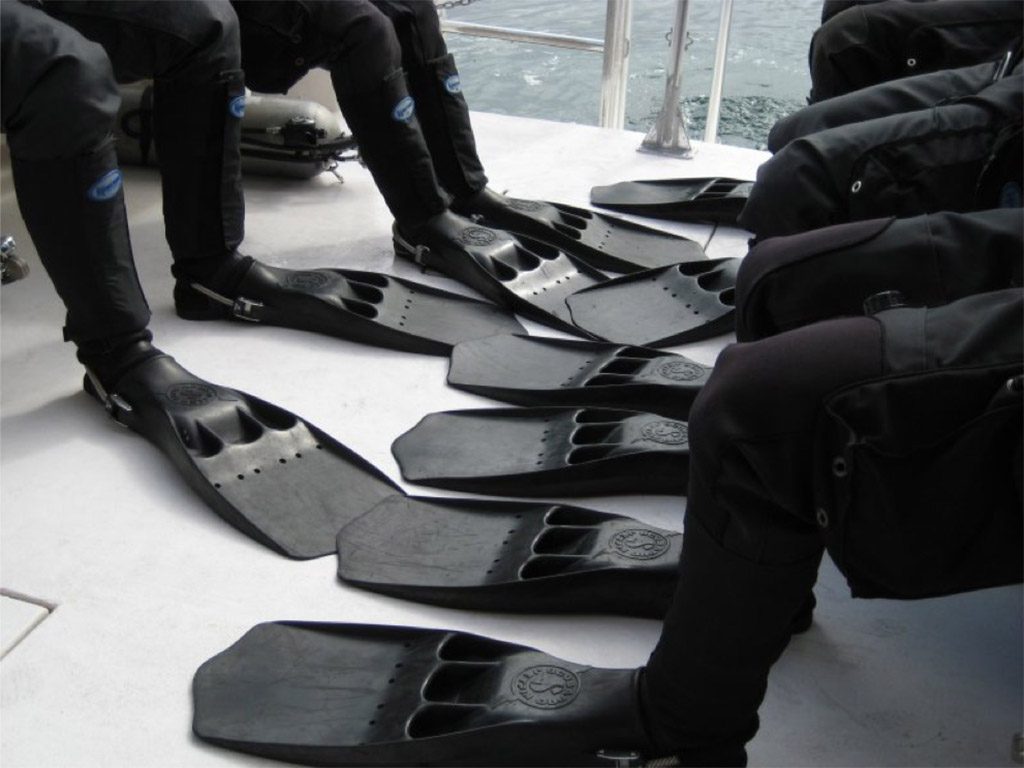
Tech divers are a fickle bunch. Despite the best efforts of gear manufacturers to tempt them with innovative new designs, they stubbornly cling to a fin style that has been around since the 1960s—the humble Jet Fin, pioneered by French inventor Georges Beuchat. Chunky, reassuringly heavy, and lacking the fashionable finesse of more contemporary fins, the Jet Fin, with its classic vented design, is the 4×4 pickup of diving fins. They’re a robust, unbreakable, no-nonsense model that gets the job done.
Fourth Element’s latest fins are aimed squarely at the tech market, and it’s safe to say that they’ve consciously opted for an “if it ain’t broke, don’t fix it” approach. The fin blades feature a wide, almost stubby paddle design, which delivers the stability and maneuverability that tech divers love, allowing for precise control of the fin through the ankle. During my testing over the last couple of months, fin strokes like the classic frog kick and modified flutter were performed with ease and control whilst the stiffness of the blade made back finning (the fanciest finning trick in the tech diver’s repertoire) particularly effortless.
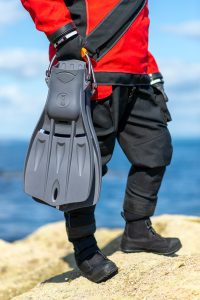
In typical Fourth Element style, they’ve snuck in a number of subtle innovations to subvert the norm. Most fins are injection-molded using a thermoplastic rubber (TPR) but Fourth Element has opted for a natural rubber using a compression mold. The result is a fully recyclable fin with one key benefit—Fourth Element can vary the firmness (the so-called “Shore” rating) of the rubber in key places. The foot pocket, for example, uses a softer rubber along the top of the pocket whilst maintaining a stiffer rubber for the base. In theory, this should make for a more comfortable fin which alleviates pressure on the Achilles tendon (and reduces the potential of cramp, we’re told) whilst maintaining stiffness where needed to transfer power and maintain stability and control. Clever stuff indeed.
It’s safe to say that this approach isn’t without its foibles, however. During my testing, I did find that the softer lip along the top of the foot pocket did occasionally have the habit of rolling back inside itself when donning the fin in a bit of a hurry. I suspect the rock boots I use with my Otter Atlantic drysuit were causing the occasional snag. Those that use turbo soles or wetsuit boots featuring a smoother dorsal (bridge) area may not experience this.
You don’t need to look far to spot another innovation, and I’m not talking about the jaunty choice of three colours (grey, aquamarine, and, of course, hardcore techie black). Look closely and you’ll see three grooves scooped into the blade immediately below the vents on each fin. Fourth Element claims these “turbulence disruptors” were inspired by scientific research carried out on Humpback Whales. These grooves purportedly disrupt the water flow across the fin to increase efficiency. Quite how you’d measure such an efficiency gain with so many other factors at play is clearly beyond my understanding of hydrodynamics, but hey, they do make the fins look gosh-darned cool. In practice, I suspect the efficiency of your own finning technique will have a far greater impact, but then anything that can provide even some small counter to this has to be a good thing, right?
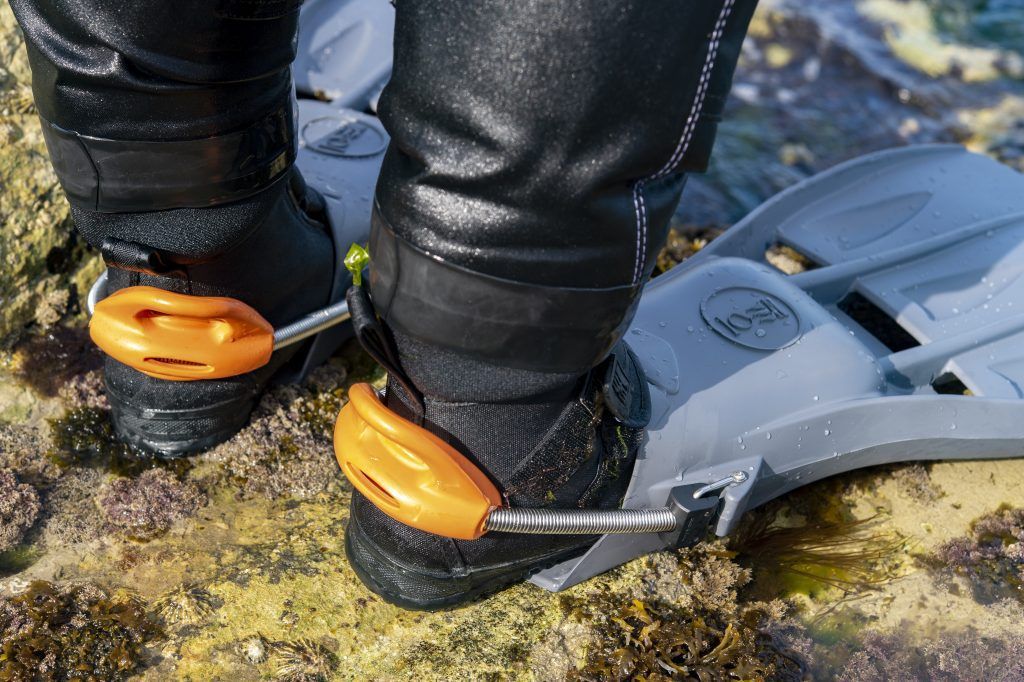
The more observant divers will have noticed another nice feature sported by these newcomers—an oval-shaped hole in the centre of each blade near the tip. Whilst not a new development—both Apeks’ RK3 fins and even some more recent Scubapro Jet Fins have them too—but Fourth Element have taken this design oddity and turned it into something genuinely useful by bundling a handy accessory that unlocks its functionality—a nylon carrying strap attached to a marine-grade stainless steel bolt snap. This simple strap loops through the oval hole in both fins, keeping them securely together and, more usefully, allowing you to clip them off to a D-ring on your harness for a bit of “hands-free” convenience.
This innocuous little extra really came into its own after a recent shore dive off Chesil Beach in Portland, UK. As any seasoned UK diver will confirm, exiting the water up Chesil’s steep pebble banks can be challenging even in flat seas. However, with the Fourth Element Tech Fins safely and securely stowed, my hands were free to focus on getting my expensive (and fragile) camera system out of the water and onto the beach in one piece. Even out of the water, this handy little extra proved genuinely useful for simply keeping the fins together—something that can be quite challenging on a busy dive boat! A fancy loop with a bolt snap may not seem like a headline feature, but you’ll soon grow to love the convenience it provides. Why other fin manufacturers never bundled something similar is beyond me.
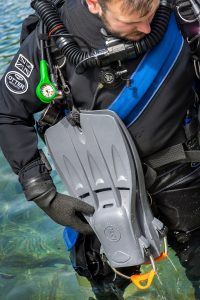
As you’d expect from a fin with tech aspirations, they’re fitted with the obligatory metal spring fin straps with chunky heel pads. A decent set of marine-grade spring straps aren’t cheap, so it’s great to see them included at such a competitive price. They’re easily replaceable, should you need to replace the spring straps over time. Not that you should need to for quite a while, since they’re made from decent marine grade steel. A post-dive fresh water rinse and dry should see them lasting for many years to come.
If there’s one question that pops up repeatedly when discussing fins, it’s the issue of weight. The Fourth Element Tech Fins are a little bit lighter than their Scubapro equivalents—a fact that may cause some concern to the more entrenched Jet Fin fans. Out of the water, a pair of Fourth Element Tech Fins in size 2XL are approximately 2.90 kg/6.40 lbs compared to 3.28 kg/7.23 lbs for a pair of 2XL SCUBAPRO’s—a difference of just 0.38 kg/0.83 lbs. In water, they’re 0.14 kg/0.30 lbs lighter in fresh and 0.13 kg/0.28 lbs lighter in salt. In practice, the difference in weight between the two brands of fin was indiscernible. I challenge anyone to state that this small weight difference had a noticeable impact on their stability! And they will only set you back; £139.95/US$195.00 /€175.00 depending on your preferred currency.
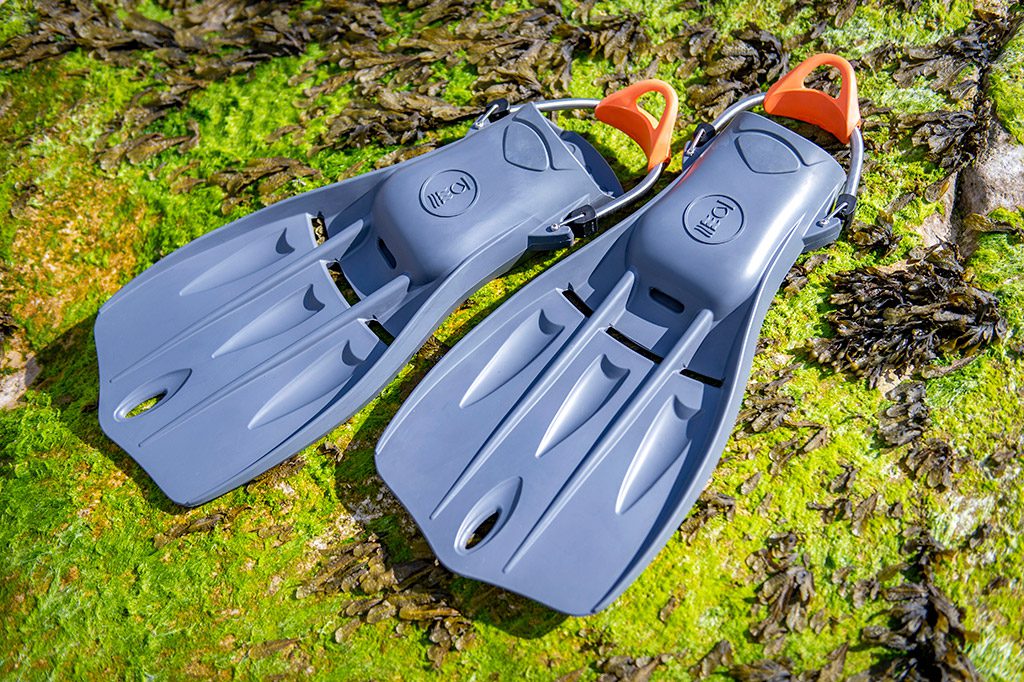
I’m a bit of a luddite when it comes to fins, but these new Fourth Element Tech Fins impressed me. Perhaps Fourth Element’s smartest design choice was to accept that tech divers don’t like change; we know what we like, and we know it works. Instead, Fourth Element has taken a proven fin design and enhanced it rather than attempting to reinvent it. What many tech divers want isn’t revolution, but evolution. And that’s exactly what the Fourth Element Tech Fins deliver. It’s a rock-solid fin design in a cost-effective, comfortable package with no compromises that gets the job done. In my book, that makes Fourth Element’s new Tech Fins something of a winner.
Extra: £139.95 / $195.00 / €175.00 – fourthelement.com

An experienced trimix rebreather and cave diver certified through Global Underwater Explorers, Jason Brown is an accomplished commercial and underwater photographer whose work has graced the pages—and covers—of numerous magazines across the globe. An experienced writer, with over 30 years of experience writing engaging features for a diverse range of publications, Jason now focuses his writing and photographic talents on his life aquatic. Jason is actively involved in a number of high-profile dive industry events. He is one of the lead organisers of both the acclaimed EUROTEK Advanced Diving Conference and the award-winning TEKCamp diving masterclass event in the UK.



















































